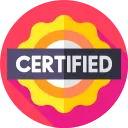FREE
daily Instructor: Dr. Charles StevensonCourse Overview
Mastering Productivity Fundamentals
Understanding Core Principles of Efficient Work
- Distinguishing between efficiency and effectiveness: Efficiency focuses on doing things right (optimizing processes), while effectiveness focuses on doing the right things (prioritizing tasks aligned with goals).
- The Pareto Principle (80/20 Rule): Identifying the 20% of efforts that produce 80% of results, and focusing on those high-impact activities. For example, identifying the 20% of clients that generate 80% of revenue.
- Parkinson's Law: Recognizing that work expands to fill the time available for its completion and strategically setting shorter, more realistic deadlines. This helps reduce procrastination and increase focus.
- The Eisenhower Matrix (Urgent/Important): Categorizing tasks based on urgency and importance to prioritize accordingly: Do First (urgent & important), Schedule (not urgent & important), Delegate (urgent & not important), Eliminate (not urgent & not important).
Goal Setting and Prioritization Techniques
- SMART Goals: Setting Specific, Measurable, Achievable, Relevant, and Time-bound goals. Example: Instead of "Increase sales", set "Increase sales by 15% in Q3 by focusing on lead generation and targeted marketing campaigns".
- Time Blocking: Allocating specific time slots in your calendar for particular tasks or activities. This helps create structure and protects time for important work.
- The Pomodoro Technique: Working in focused 25-minute intervals, followed by short breaks, to maintain concentration and prevent burnout.
- Kanban Boards: Visualizing workflow using a board with columns representing different stages of a task's progress (e.g., To Do, In Progress, Completed). This provides transparency and helps identify bottlenecks.
Advanced Time Management Strategies
Deep Work and Focused Execution
- Cultivating Deep Work Habits: Minimizing distractions and dedicating uninterrupted time to cognitively demanding tasks. This requires creating a distraction-free environment and consciously focusing attention.
- Attention Management vs. Time Management: Shifting focus from merely tracking time to managing attention and mental energy. This involves understanding your peak performance times and scheduling demanding tasks accordingly.
- Combating Procrastination: Understanding the root causes of procrastination (fear of failure, perfectionism, lack of motivation) and implementing strategies like breaking down tasks into smaller steps, rewarding progress, and using accountability partners.
- Batching Similar Tasks: Grouping similar tasks together to minimize context switching and improve efficiency. For example, responding to all emails at a designated time instead of throughout the day.
Optimizing Your Workflow and Environment
- Setting Up a Productive Workspace: Creating a physical environment that minimizes distractions and promotes focus. This includes optimizing lighting, ergonomics, and organization.
- Automating Repetitive Tasks: Identifying tasks that can be automated using tools like IFTTT, Zapier, or scripting. Example: Automatically saving email attachments to a specific folder.
- Leveraging Keyboard Shortcuts and Text Expansion: Mastering keyboard shortcuts for frequently used applications and using text expansion tools to quickly insert pre-written text snippets.
- Effective Email Management: Implementing strategies for managing email overload, such as using filters, unsubscribing from unnecessary emails, and setting specific times for checking email.
Collaboration and Communication Efficiency
Optimizing Team Workflows
- Effective Delegation: Assigning tasks to others based on their skills and strengths, providing clear instructions, and setting expectations.
- Running Efficient Meetings: Setting clear agendas, starting and ending meetings on time, focusing on key objectives, and assigning action items with deadlines.
- Asynchronous Communication: Utilizing tools like Slack, Microsoft Teams, or project management software for asynchronous communication to reduce interruptions and promote focused work.
- Project Management Methodologies: Applying methodologies like Agile or Waterfall to effectively manage projects, track progress, and ensure timely completion. For example, using Scrum for iterative development and continuous improvement.
Clear and Concise Communication
- Writing Effective Emails and Reports: Using clear and concise language, structuring information logically, and providing clear calls to action.
- Active Listening Skills: Paying attention, asking clarifying questions, and summarizing key points to ensure understanding.
- Giving and Receiving Feedback: Providing constructive feedback that focuses on specific behaviors and their impact, and receiving feedback with an open mind.
- Conflict Resolution Techniques: Applying strategies for resolving conflicts constructively, such as active listening, empathy, and compromise.
FlashCards
External Resources
Add-On Features
Expert Instructor
Get live study sessions from experts
Honorary Certification
Receive a certificate before completing the course.
Currency
Sign in to change your currency
I'm not ready to enroll?
Tell us why, because it matters.
Enroll With a Key
Course Benefits
Get a Job
Use your certificate to stand out and secure new job opportunities.
Earn More
Prove your skills to secure promotions and strengthen your case for higher pay
Learn a Skill
Build knowledge that stays with you and works in real life.
Lead Teams
Use your certificate to earn leadership roles and invitations to industry events.
Visa Support
Use your certificate as proof of skills to support work visa and immigration applications.
Work on Big Projects
Use your certificate to qualify for government projects, enterprise contracts, and tenders requiring formal credentials.
Win Partnerships
Use your certified expertise to attract investors, get grants, and form partnerships.
Join Networks
Use your certificate to qualify for professional associations, advisory boards, and consulting opportunities.
Stand Out Professionally
Share your certificate on LinkedIn, add it to your CV, portfolio, job applications, or professional documents.
Discussion Forum
Join the discussion!
No comments yet. Sign in to share your thoughts and connect with fellow learners.
Frequently Asked Questions
For detailed information about our Working Smarter, Not Harder course, including what you’ll learn and course objectives, please visit the "About This Course" section on this page.
The course is online, but you can select Networking Events at enrollment to meet people in person. This feature may not always be available.
We don’t have a physical office because the course is fully online. However, we partner with training providers worldwide to offer in-person sessions. You can arrange this by contacting us first and selecting features like Networking Events or Expert Instructors when enrolling.
Contact us to arrange one.
This course is accredited by Govur University, and we also offer accreditation to organizations and businesses through Govur Accreditation. For more information, visit our Accreditation Page.
Dr. Charles Stevenson is the official representative for the Working Smarter, Not Harder course and is responsible for reviewing and scoring exam submissions. If you'd like guidance from a live instructor, you can select that option during enrollment.
The course doesn't have a fixed duration. It has 22 questions, and each question takes about 5 to 30 minutes to answer. You’ll receive your certificate once you’ve successfully answered most of the questions. Learn more here.
The course is always available, so you can start at any time that works for you!
We partner with various organizations to curate and select the best networking events, webinars, and instructor Q&A sessions throughout the year. You’ll receive more information about these opportunities when you enroll. This feature may not always be available.
You will receive a Certificate of Excellence when you score 75% or higher in the course, showing that you have learned about the course.
An Honorary Certificate allows you to receive a Certificate of Commitment right after enrolling, even if you haven’t finished the course. It’s ideal for busy professionals who need certification quickly but plan to complete the course later.
The price is based on your enrollment duration and selected features. Discounts increase with more days and features. You can also choose from plans for bundled options.
Choose a duration that fits your schedule. You can enroll for up to 180 days at a time.
No, you won't. Once you earn your certificate, you retain access to it and the completed exercises for life, even after your subscription expires. However, to take new exercises, you'll need to re-enroll if your subscription has run out.
To verify a certificate, visit the Verify Certificate page on our website and enter the 12-digit certificate ID. You can then confirm the authenticity of the certificate and review details such as the enrollment date, completed exercises, and their corresponding levels and scores.
Can't find answers to your questions?
Certification Guide

Complete the Course
Begin the course by selecting your experience level in the course content section:
Beginner: Master the material with interactive questions and enough time.
Intermediate: Get certified faster with hints and balanced questions.
Advanced: Challenge yourself with more questions and less time

Earn Your Certificate
To download and share your certificate, you must achieve a combined score of at least 75% on all questions answered.





